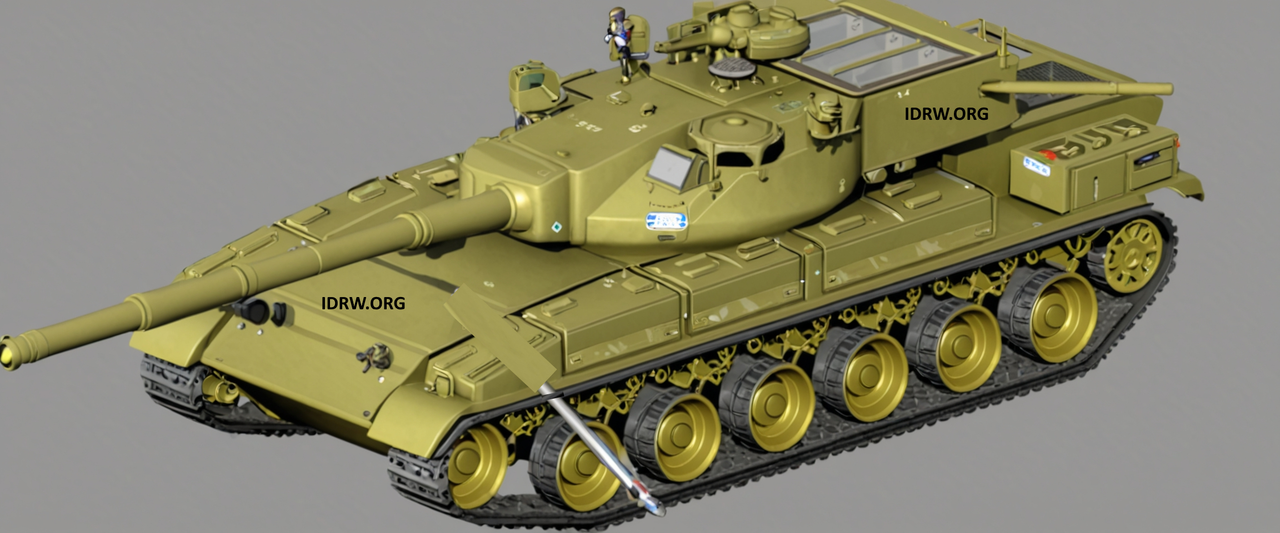SOURCE: AFI

The Serbian YouTube channel RedEffect, known for its reviews and opinions on Main Battle Tanks (MBTs), recently gave its analysis of India’s upcoming Future Ready Combat Vehicle (FRCV), designed to replace the T-72 MBTs in the Indian Army. According to RedEffect, India is making notable strides in military hardware development, following the recent launch of its light tank project, with the FRCV showing promising design features and innovations.
The FRCV concept seems to draw inspiration from Russia’s T-14 Armata, but with distinct modifications. One of the standout aspects is the existence of two design options:
Manned Turret Version: In this version, the crew would sit lower in the hull under the turret but still rotate with it in the turret basket. This low crew placement offers better protection, making the tank more resilient in combat. The driver would sit at the front of the tank as per traditional designs.
Unmanned Turret Version: Drawing more heavily from the Armata, this variant has the entire crew seated in the hull, with the turret being fully unmanned. This configuration improves crew safety by isolating them from the turret, making them less vulnerable to hits.
One of the unique features highlighted by RedEffect is the dual autoloader system in the unmanned turret variant, consisting of both a carousel autoloader in the hull and a bustle autoloader in the turret. This dual system is rare in tank designs, with only a few examples like Russia’s Burlak turret concept, which never progressed beyond the conceptual phase. According to RedEffect, the dual autoloader setup could potentially increase ammunition capacity while reducing the need for the crew to manually reload. The bustle autoloader allows the FRCV to handle longer armor-piercing fin-stabilized discarding sabot (APFSDS) projectiles, a design challenge that has long plagued Russian tanks.
In the manned turret version, the carousel autoloader is omitted, and extra ammunition is stored near the driver, enabling easy manual reloading. This is a practical choice, as the crew would still be in proximity to the turret.
Other features of the FRCV, according to RedEffect, include promising gun elevation angles, which would make the tank well-suited for operations in mountainous regions, particularly at the border areas between India and China. This is a tactical advantage in high-altitude combat scenarios.
The tank is expected to weigh between 45 to 55 tons, though, as RedEffect points out, it’s common for such projects to exceed initial weight estimates. For its weight, the tank will be powered by a domestically developed 1,500 horsepower engine, offering a solid power-to-weight ratio that ensures decent mobility, even at the upper weight range.
The 120mm smoothbore gun is another point of interest, as India appears to be moving away from the rifled guns seen on the Arjun MBT. While details on the gun’s origin remain unclear, RedEffect speculates that India could either be procuring these from a foreign manufacturer or developing the gun domestically.
Protection-wise, the FRCV will likely feature composite armor along with advanced Explosive Reactive Armor (ERA), capable of defending against both kinetic energy (KE) projectiles and high-explosive anti-tank (HEAT) rounds.
Finally, the tank will be integrated with cutting-edge systems like automatic target tracking—possibly AI-powered—along with a battle management system and a remote weapon station. This aligns with the modern trend of leveraging AI for improved situational awareness and firepower control on the battlefield.
In conclusion, RedEffect views India’s FRCV as a significant leap forward in MBT development. With the recent acceptance of the FRCV program as part of India’s defense modernization efforts, the project seems to be progressing well. The key decision ahead is whether the Indian Army will first adopt the manned turret variant before eventually transitioning to the unmanned version. Either way, RedEffect is optimistic about the potential of the FRCV to meet India’s future combat requirements.